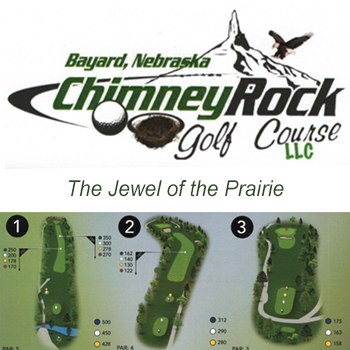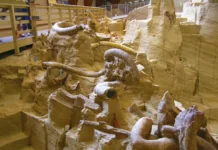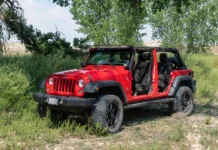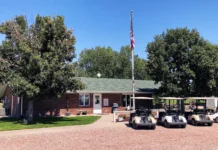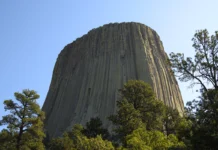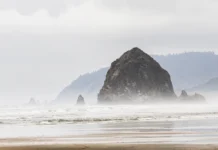| NEBRASKA |
Originally homesteaded by the Montz family in 1886, the property 14 miles southwest of Morrill, Nebraska, often served as a way station in its early days for travelers due to its location halfway between La Grange, Wyoming, and Scottsbluff, Nebraska.
Story by: Kathrine Rupe
Photography: Hawk Buckman
| HISTORY OF MONTZ
It was also the end of the line for the telephone company for many years, making it a vital gathering place for neighbors on surrounding farms and ranches.
Today, Montz Ranch Wildlife Management Area consists of 4800 acres of rolling prairie, hills, springs, and sandstone cliffs, encompassing the far western edge of the Wildcat Hills, which in its entirety contains over 30,000 acres of public land stretching some 60 miles, from near the Nebraska/Wyoming state line to Chimney Rock in the east.
The environment of the Montz Ranch WMA supports bobcats, coyotes, swift foxes, elk, mule deer, whitetail, antelope, sharp-tailed grouse, wild turkeys, and even a small herd of bighorn sheep. The area also contains many species of wildflowers, grasses, and even cacti, including Scarlet Globe Mallow, Prickly Pear, Ground Cherries (the underripe fruit is toxic, so resist temptation and leave it for the wildlife), and Yucca, all of which can be found along the trails. Those with a sharp eye might even spot Pincushion Cactus, a rare sight at less than three inches tall, with blooms lasting only about three days.
In 2007, with the partnership of Platte River Basin Environments, Nebraska Game and Parks Commission, the Nature Conservancy, and the Nebraska Environmental Trust, the ranch was purchased to preserve this unique ecosystem as part of the core of the Wildcat Hills Wildlands Initiative. (source: Platte River Basin Environments www.nebwild.org)
Signs at the gate state that hunting and fishing are allowed, but open fires, swimming, and target shooting are prohibited, no motorized vehicles are allowed through the gate, and dogs are not permitted from May 1st through July 31st. Rock climbing is discouraged.
| FINDING YOUR STAMINA
Cycling enthusiasts, horseback riders, and hikers can traverse the same paths. such as an approximately 2-mile-long unmaintained trail at the base of the cliffs or west across relatively level pastureland toward an abandoned building in the distance. A well-established vehicle track leads to one of several stock tanks on the property.
For those with time and stamina, a hike up the westernmost bluff leads to an elevation of approximately 4800 feet to the North and South Rim Vistas, which offer a breathtaking view of both Scotts Bluff and Banner counties. From the North Rim Vista is an overlook of the Horse Creek Meadows, where in September of 1851, the largest gathering of Plains Indians in United States history occurred.
A staggering 10,000 Sioux, Cheyenne, Gros Ventre, Crow, Shoshone, Assiniboine, Arikara, Mandan, and Arapaho (the Comanche reportedly did not RSVP), and their 50,000 ponies gathered for a month at the confluence of Horse Creek and the North Platte River to create the Horse Creek Treaty, called The Big Smoke by the natives, which established an area larger than the Louisiana Purchase as the new homelands of twelve separate tribes, and guaranteed safe passage to the flood of white settlers passing through Indian Country on their way to Oregon and California.
The South Rim Vista offers an expansive view of the headwaters of Pumpkin Creek Valley, called Gonneville Creek during the Fur Trade, and Pumpkin Seed Creek in 1872 when a man named Creighton established the first cattle ranch in the area, located on the first major rise to the south. Eventually, the name was shortened to simply Pumpkin Creek. Fed solely by springs at the base of the Wildcat Hills, which emerge from the fractured Brule Formation Aquifer, it snakes its way through Scotts Bluff, Banner, and Morrill counties before finally emptying into the North Platte River near Bridgeport, 85 miles away, the only running water in all of Banner County. Years of drought and groundwater irrigation pumping have taken a heavy toll on the creek, once deep enough to fish and paddle boats on.
Meanwhile, back down on the prairie on solid ground are two wooded canyons on the west side of the escarpments, which contain two natural springs that provide water for wildlife and livestock on the ranch and where fossils and ancient artifacts have been discovered.
Directions: From Morrill, drive south 14 miles until you reach the intersection of Stegall Road/County Road 7 and County Road S. Travel another 0.7 miles until you reach a parking area with walk-in access on the east side of Stegall Road. From here, you can access an approximately 1-mile-long unmaintained trail leading east.
There is a second parking and access area another 0.7 miles further south, bringing you closer to the escarpments and giving you access to an approximately 2-mile long, unmaintained trail. Please be on the lookout for prairie rattlesnakes, which are very common in this area and most active from March thru mid-November. Also, be aware of thunderstorms with lightning and hail that can erupt with little warning in the summer. And don’t forget your camera.
| MORE INFORMATION




